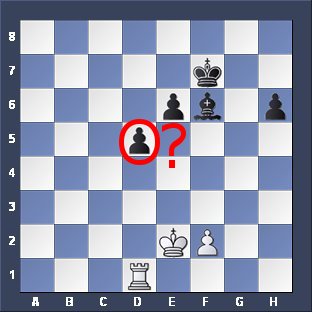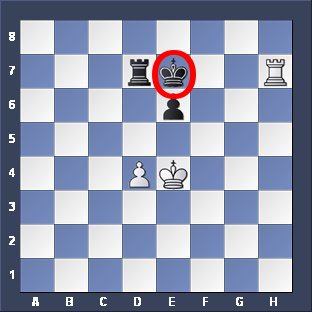Learn how to handle rooks in chess effectively. They are not so flexible like the light chess pieces (bishops and knights) as they need open files to become active. So don’t place a rook behind pawns, do this only in rare cases where a rook is needed to support a pawn-push.
The Chess Rook is called -a heavy piece- and loves open files and ranks. In your chess game never lock him away behind blocked pawn structures or let him fall asleep behind a silly pawn in the corner. In general he is stronger than a bishop or a knight.
Never exchange your rook for a bishop or for a knight in equal chess positions as this will cost material. This is a bad exchange and you are playing at a material disadvantage from then on. The reason is that the rook has a value of five pawns but a bishop or knight has a value of three pawns only. But if you can trade in your rook for the queen then do it as the value of a queen is roughly two rooks!
In a chess game rooks are developed later in the game. After the initial opening pawn moves, the light pieces (knights and bishops) move out first to exercise control in the center. After that the rooks move to the open or half-open files.
It is a very strong plan, if you can double up two rooks on an important open file and control it completely. Later on you might penetrate to the second (as Black) or seventh rank (as White) from this position, which gives you positional advantage.
In the endgame put your rook behind your passed pawn to support the advance of this pawn or attack the opponents pawns from behind the lines.
 |
 |
| The chess rook attacks the FILES and the RANKS. In this case the d-File and the 5th Rank. | He can take the valuable queen or the bishop. A bishop has less value than the rook, so take the queen. The queen has a value of two rooks. You get the queen for FREE! That’s good business! |
 |
 |
| The rook attacks the bishop. If you capture you will lose the R and get the bishop. Bad deal. Your R has more value. | Here he has checked the King, he must move away OR the knight goes to f6, to block the check between the king and the rook. |
 |
 |
| The R attacks the pawn on d7. If he takes the pawn he will give check to the black king at the same time. | The R could take the Pawn on d5. But the black Pawn will recapture and you lose the rook for a lousy pawn. That’s real bad business, man! |
 |
 |
| The rook attacks the king.(gives check) He must move or protect himself in pushing the g-Pawn in between. After that you can take the b-Pawn for free. | I am happy to give my R for the queen here! That’s good business as the queen has a value of TWO rooks! |
 |
 |
| Here he attacks the bishop. If you capture you will lose your rook and get the less valued bishop. | The R has checked the king, he must move away after that you could exchange the black rook. |
 |
 |
| The white rook attacks the b-Pawn and the g-Pawn. Don’t leave the R there because the black king attacks him. To take the b-Pawn is silly because you lose your kook as the black R will recapture. But to take the g-Pawn for FREE is good business. | The white R could take the d-Pawn BUT the king will recapture. That would be a really bad move! |
 |
 |
| The white rook attacks the weak eight rank. If he goes to c8 the black king is in check and can’t move out of the check. That’s why the black king will be checkmate then. | The R could take the black one. This would be just an exchange of equal pieces. |

Learn more about the value of the rook.
You are White – Win it!
How to win this position as White
1. Capture the weak pawn on h7 first with your rook. This is an easy target.
2. Make sure that the black king does not penetrate into your position as he might push one of his pawns to the last rank and promote it to a queen.
3. Your task is to capture all black pawns in the long run, then give checkmate with your rook and king. To do this requires further studies.
 Sick of Losing at Chess? Get Chess Courses from a Grandmaster directly! HUGE Discount! Click here!
Sick of Losing at Chess? Get Chess Courses from a Grandmaster directly! HUGE Discount! Click here!Get Chess Course -Beginners Package- from a Grandmaster! Huge Discount!
Privacy Policy Impressum/Disclosure Disclaimer Donate
© 2008- www.Expert-Chess-Strategies.com
